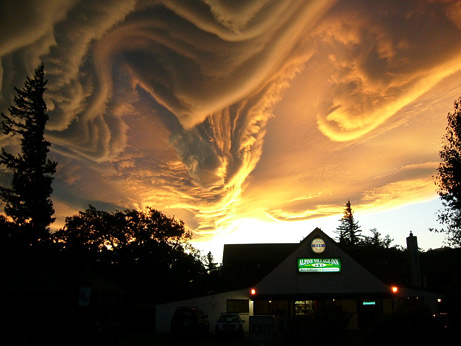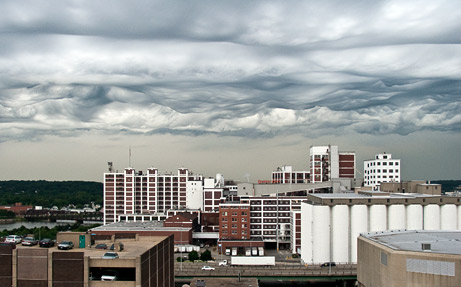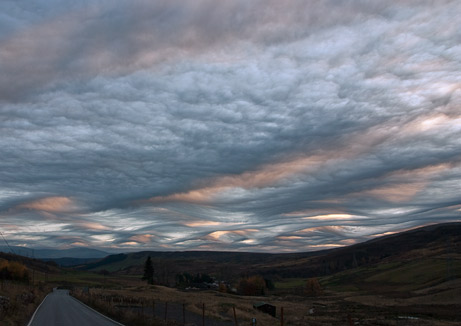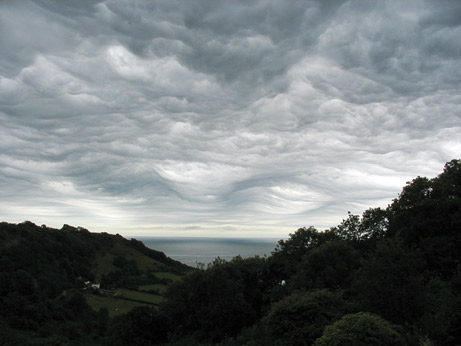There are many different kinds of clouds, but there are only four main cloud types, and, to date, about 80 cloud varieties have been officially identified. Recently, some scientists have said that “asperatus” clouds, pictured at the right, cannot be described by the recognized varieties, and that they should have their own name. The name asperatus is from Latin, meaning ‘to make rough’ and refers to the turbulent and choppy undersides of the formations. Gavin Pretor-Pinney, founder of the Cloud Appreciation Society, calls it the “Jacques Cousteau cloud” because of its resemblance to a roiling ocean surface as seen from below. He has proposed a “formal,” Latin name: Undulus asperatus–roughly, “a very turbulent, violent, chaotic form of undulation.”
Margaret LeMone, an atmospheric scientist at the National Center for Atmospheric Research, considers asperatus a “likely” new cloud type. Jane Wiggins, an amateur photographer, is credited with the recent buzz about the cloud formations because of a picture of asperatus clouds she photographed from the window of a downtown office building in Cedar Rapids, Iowa, in June 2006. Pretor-Pinney came across the photograph in 2009 and enlisted the aid of the Royal Meteorological Society in determining if asperatus was, indeed, a new cloud variety. Wiggins’ photograph was posted on the National Geographic web site on June 3, 2009, and related news stories and photos quickly spread via the Internet.
The Royal Meteorological Society is currently gathering evidence of the type of weather patterns in which undulus asperatus clouds appear, in order to ascertain how they form and to decide whether they are distinct from other undulatus clouds and should be submitted to the World Meteorological Organization for recognition. The last “new” cloud formation recognized in the World Meteorological Organization’s official list of cloud formations was cirrus intortus, which was added to its International Cloud Atlas in 1951. The current, ubiquitous use of digital cameras and the relative rarity of asperatus formations are considered the main reasons for this “new” discovery.
Editor’s note: Most of the above is a synopsis of the Wikipedia and National Geographic web articles on the subject. A gallery of asperatus cloud photos from the Cloud Appreciation Society can be seen at http://www.cloudappreciationsociety.org/gallery/index.php?x=browse&category=52&pagenum=1
Article by Bill Norrington





